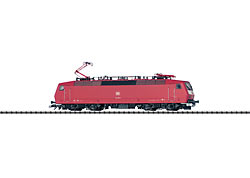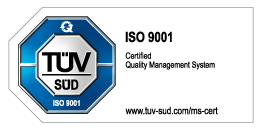Electric Locomotive.
Prototype: German Federal Railroad (DB) class 120.0 general-purpose express locomotive. Version before regular production of the locomotive, in the original paint scheme. Era IV.
Most Important Facts
| Article No. | 22764 |
|---|---|
| Gauge / Design type | Trix H0 / |
| Era | IV |
| Kind | Electric Locomotives |
Check with your local dealer Find Dealer
-
Product description
Model: The locomotive has a die-cast metal frame and body. It also has an NEM digital connector with a bridge plug for conventional operation. The locomotive has a powerful 5-pole motor. 2 axles powered. 2 traction tires. The headlights and marker lights are maintenance-free LED's. The headlights and marker lights will work in conventional operation and can be controlled digitally after a decoder is installed. The engineer's cabs have interior details. The locomotive has separately applied grab irons. It also has NEM coupler pockets. Length over the buffers 221 mm / 8-11/16".
Spare parts for our articles can be found here in our spare parts search.
One-time series.
-
Publications
- Main Catalog 2007/2008 - New items 2007
-
Prototype information
The Three-Phase Current Pioneer. The class 120 marked the technological change to three-phase current propulsion. This principle promised compact motors without commutators and largely free of parts that would wear out, commutator rings, brushes, and mechanical contacts. The performance specifications for this new development were broadly formulated as a wish list, because a wide torque range and rpm range can be mastered with three-phase current technology. The class 120 was designed to pull InterCity trains at speeds of 200 km/h / 125 mph and 5,400 metric ton freight trains, and be equipped with push/pull controls and electric regenerative brakes. In 1977, the DB ordered five experimental units, which were thoroughly tested on test stands, on test runs, and in operational use. Startup, tractive effort, acceleration, running characteristics, braking power, power consumption, and stability were part of the program. Comparison tests with other makes of locomotives as well as startup tests on the Lötschberg and Semmering grades confirmed the effectiveness of the technology. The speed record was 265 km/h / 165 mph. During the test phase, new developments were introduced, for example: microprocessors for faster monitoring and control. Components were constantly improved until all five units were technically at the same level in 1982 and were ready for regular production. During the several years of development the purchasing policy changed, however. Instead of all-round locomotives, special locomotives were once again preferred on the basis of common development platforms with many parts in common. Therefore, only the first production run of 60 units were purchased of the class 120. The five prototypes, to which the prototype of our model also belongs, continue to be used for test purposes.







